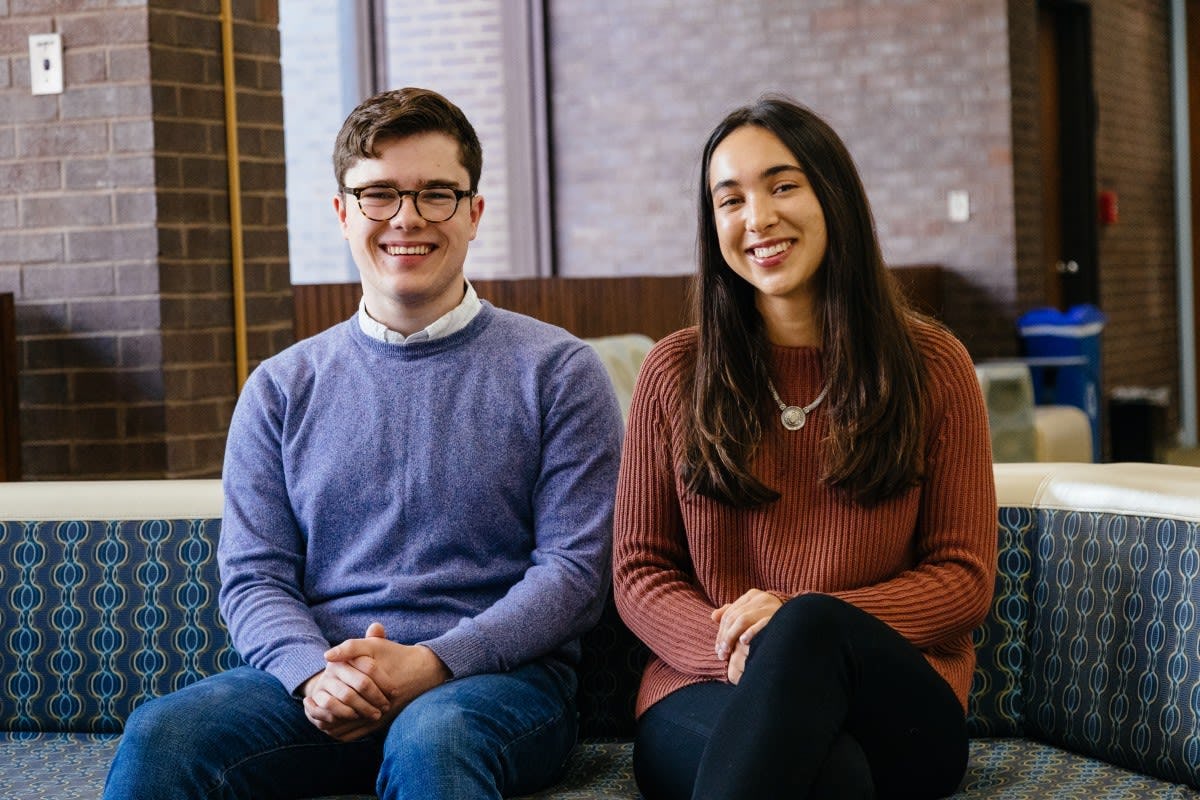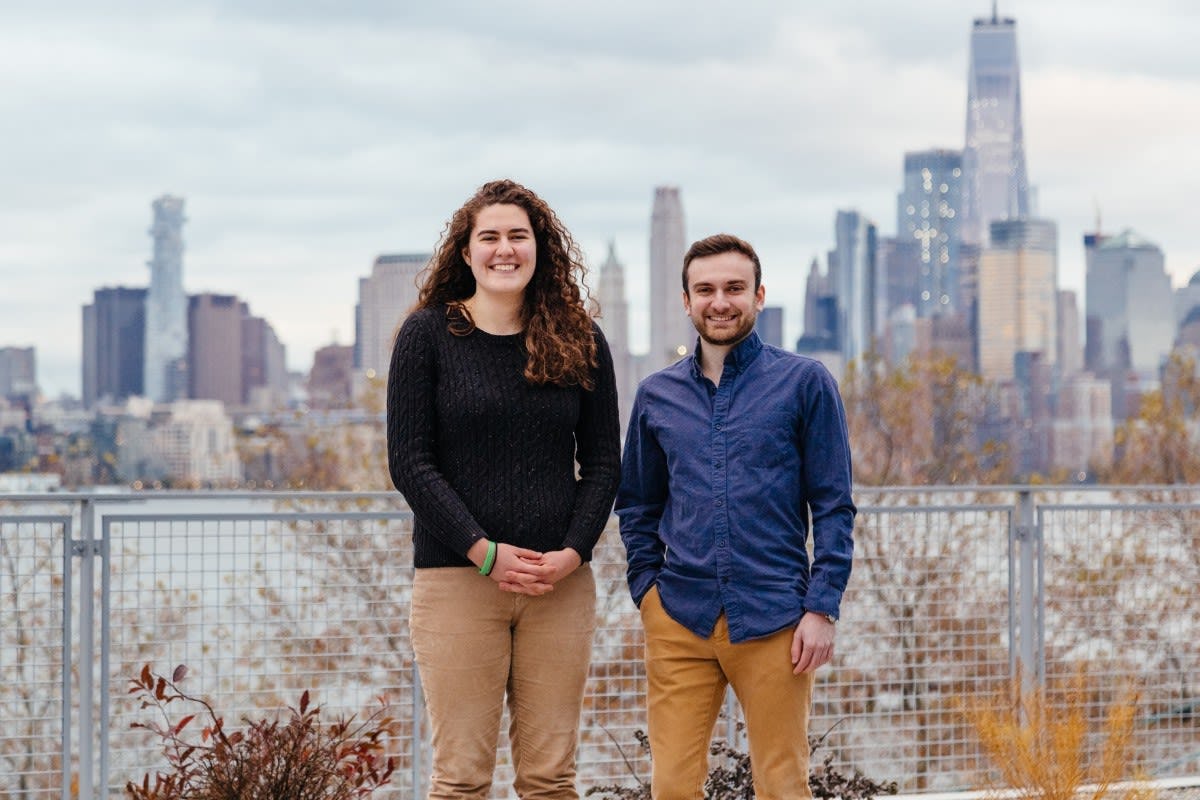Undergraduate Researchers Do Big Things at Stevens, Too
For many undergraduate students across college campuses, the roadmap to a dream career or admission to an elite graduate program might be dotted with impressive study abroad experiences, volunteer work for laudable causes or internships at some of the most influential companies on the planet, like Amazon or Facebook, or maybe all three. (Stevens undergraduates often do).
But if you’re a Stevens student, you can also add perform hands-on, pathbreaking research alongside Ph.D. candidates under the direct supervision of highly-accomplished faculty.
“That’s exactly why I came to Stevens when I was debating which school to attend. I had done a tour of the biology department and had the chance to meet a Ph.D. student I wanted to work with. I knew then the second I got into Stevens, I wanted to work in that lab,” said Stevens biology senior Penelope Halkiadakis.
She was able to have the research experience she envisioned, but was still surprised by the generous mentoring by Stevens researchers, as well as the independence and responsibility she was afforded.
But Halkiadakis’ experience is hardly unique at Stevens, according to Professor Matt Libera of the Department of Chemical Engineering and Materials Science.
“Stevens provides opportunities for undergraduate research throughout all schools and departments, and these research experiences can have a powerful impact on the students. In my experience, the really serious students emerge when something in the project goes wrong. When they figure out on their own, or with the help of others in the research group, how to solve the problem and move forward, that’s when some of the magic of the education process really happens," says Libera.
In Stevens’ research centers and laboratories, it’s common to find undergraduate students working on some of the most pressing research challenges of our time, touching upon such areas as gene therapy, genomics, quantum computing, green infrastructure and infection detection.
Some have even seen the fruits of their tenacious and collaborative labor — years in the making — published in journals, presented at conferences or implemented in the real world.
And no matter the field, most agree that helping advance research that might potentially make a difference in the real world was the defining experience of their academic careers.
Halkiadakis worked in the gene therapy lab at Stevens studying the biological causes of the rare mitochondrial diseases MERRF and MELAS, for which there are no known cures. Under the supervision of Professor Peter Tolias and Senior Research Associate Ueli Gubler, and former Stevens professor Philip Leopold, she and then Ph.D. student Ciara Ann Agresti (who graduated last May) contributed new insights into gene therapy research devoted to curing those diseases.
Their findings were published last summer in the Journal of Translational Genetics and Genomics.
“I remember the countless hours in the lab — the ebb and flow of success and failure in experiments — and the sheer number of hours my Ph.D. mentor and I put into writing the paper. After all our hard work, finding out our paper was accepted into a journal was a humbling and amazing feeling,” she recalled.
Robert Scully, a junior majoring in physics, should soon experience the excitement of seeing his name in a peer-reviewed, scientific journal as well. He is part of professor Stefan Strauf’s research team studying quantum materials in the nanophotonics lab at Stevens.
For Scully, the publication of that research study would cap off an extraordinary learning experience.
“Participating in research to the degree I’ve been able to do, and operating equipment like the Raman spectroscopy instrumentation I used all the time, are experiences that at other universities are often reserved for graduate students, not undergraduate physics majors,” Scully says. “I’m looking to go to graduate school and continue doing research, and this is a very exciting start.”
For civil engineering major Samantha Conte, a junior, research required being outside most of the time. The (https://www.stevens.edu/news/how-stevens-living-laboratory-will-revolutionize-urban-stormwater-management "How the Stevens "Living Laboratory" Will Revolutionize Urban Stormwater Management") project, spearheaded by renowned green roofs researcher and Stevens professor Elizabeth Fassman-Beck, was ramping up when she came on board in the summer after her freshman year. Located in the North Building on the Stevens campus, the research site now comprises 40 green roof tables, a rain garden and four bio-retention planter boxes.
“I remember building the 150-pound table trays to hold the green roof material that’s now on the building, analyzing the data from the bio-retention planters, spending hours making hydrographs, sitting out in the rain to observe the inlets and outlets to try and figure out what the problems were," she recalls.
Throughout that process, Conte acquired a depth of knowledge that convinced Fassman-Beck that Conte was the right person to represent Stevens at the New Jersey Water Environment Association Conference last May.
“I remember Professor Fassman-Beck telling me why I needed to present at the conference: ‘No undergrad knows as much about stormwater management as you do now,’” Conte recalled.
Recent graduate Joshua Ross ’18 also knows a thing or two about the real-world impact of Stevens research. The chemical biology major took part in a Stevens-Hackensack University Medical Center collaboration headed by Libera that continues working to develop a rapid-detection technology that can identify bacterial and viral infections before they become life-threatening.
“Our test requires extracted DNA or RNA from a blood sample that’s been spun down, which would be a quicker, easier and more cost-effective method than current tests that involve culturing bacteria,” Ross says.
Ross notes the generosity and patience of Ph.D. students such as Youlong Ma, who shared his knowledge and training, including in the operation of sophisticated hardware in Stevens' Laboratory for Multi-Scaling Imaging.
“He taught me everything about scanning-electron microscopes and electron beam lithography, which involve incredibly complicated, multimillion dollar pieces of equipment. But more importantly, he really took the time to answer questions on anything.”
Now in his first year at NYU School of Medicine, Ross says his Stevens experience taught him to see research in very concrete ways, rather than in abstract terms.
“I was an EMT when I was at Stevens. I still am. I’m not interested in research for the sake of research. The most important thing to me is making a feasible, attainable difference. To have worked on a project that I could see being scaled in a large way and saving people’s live was just incredible for me.”



